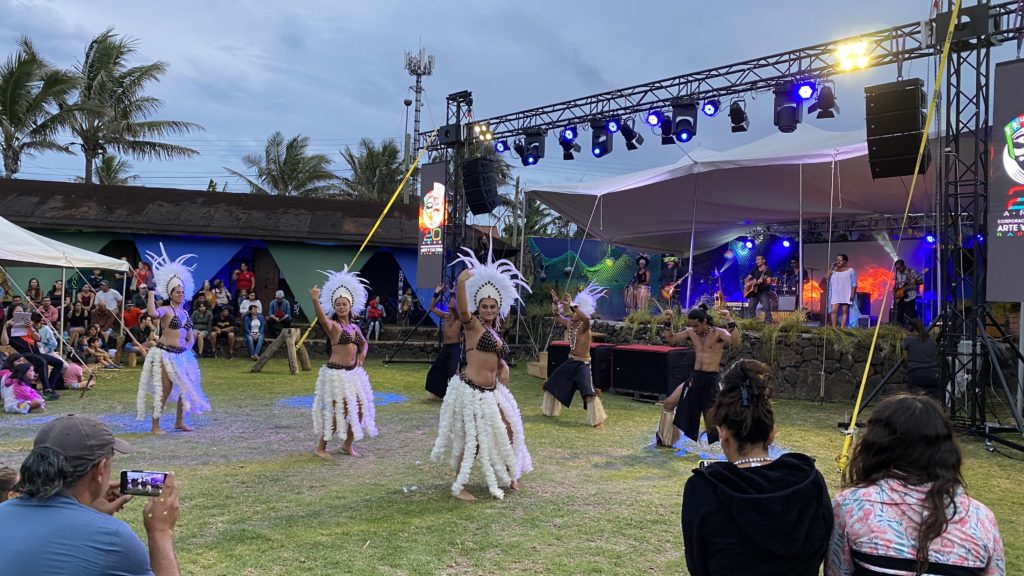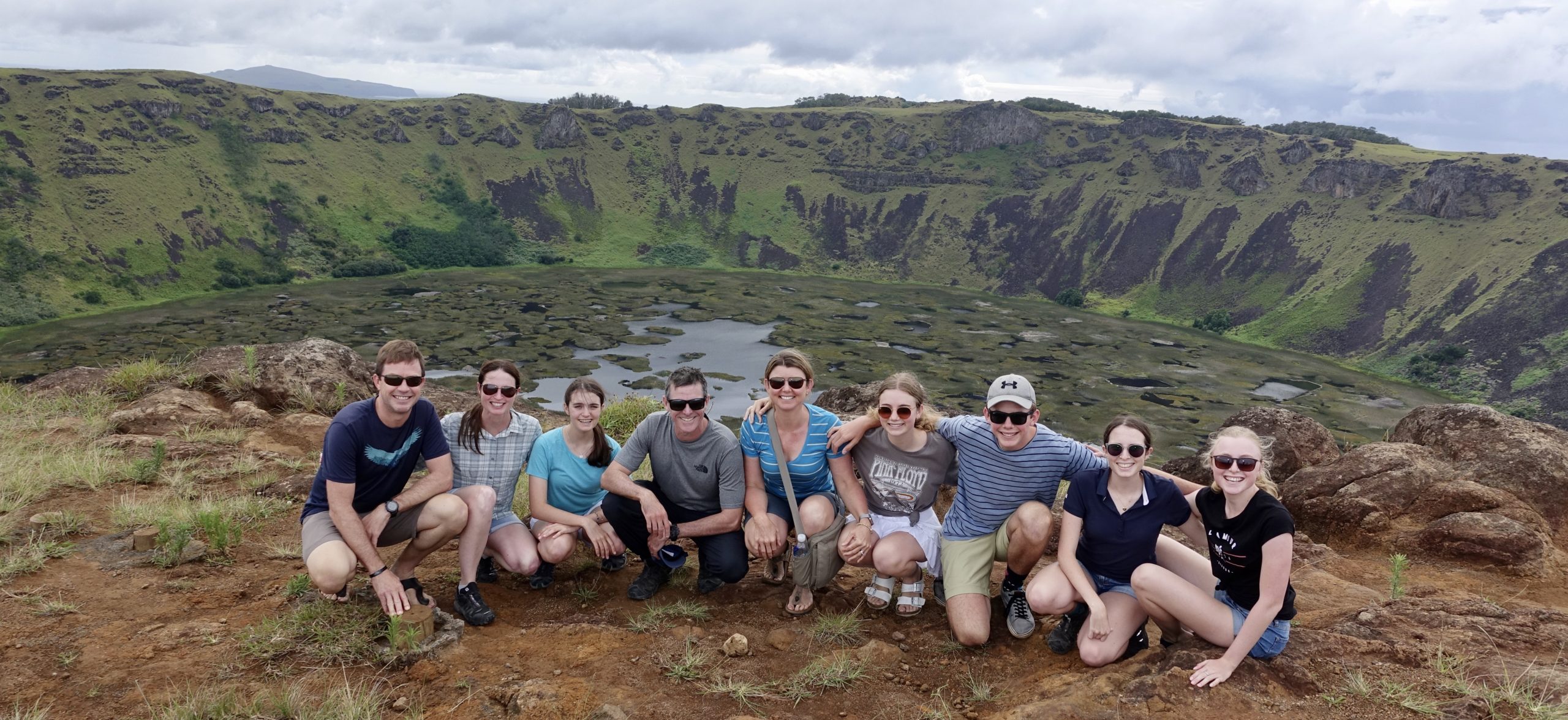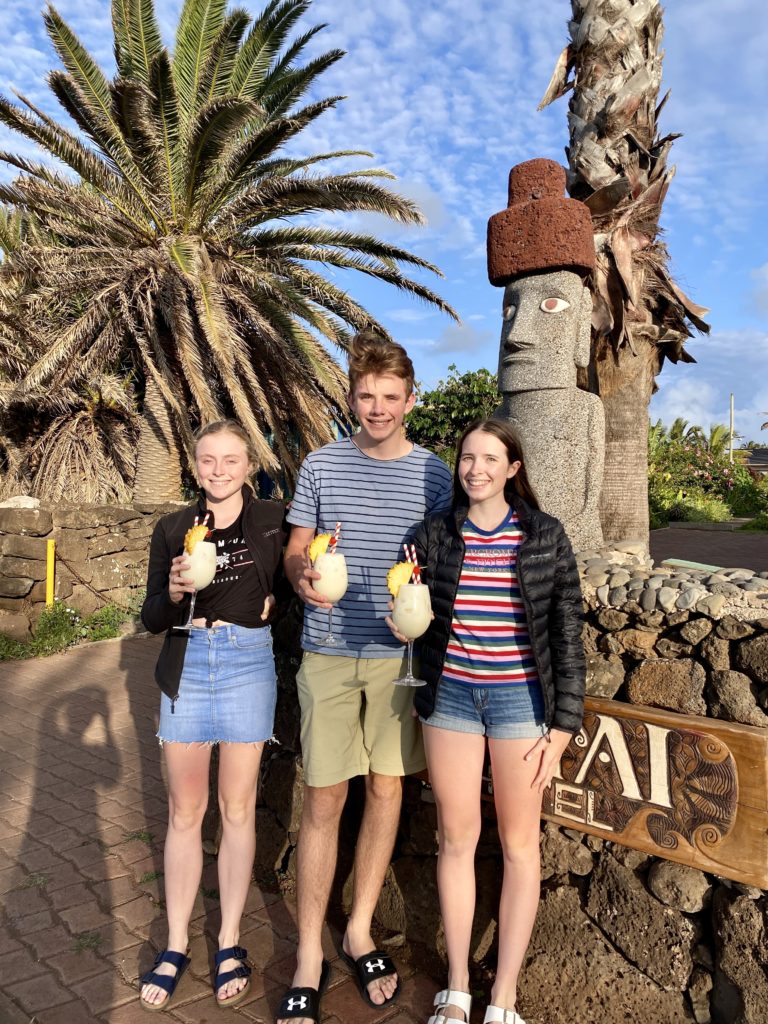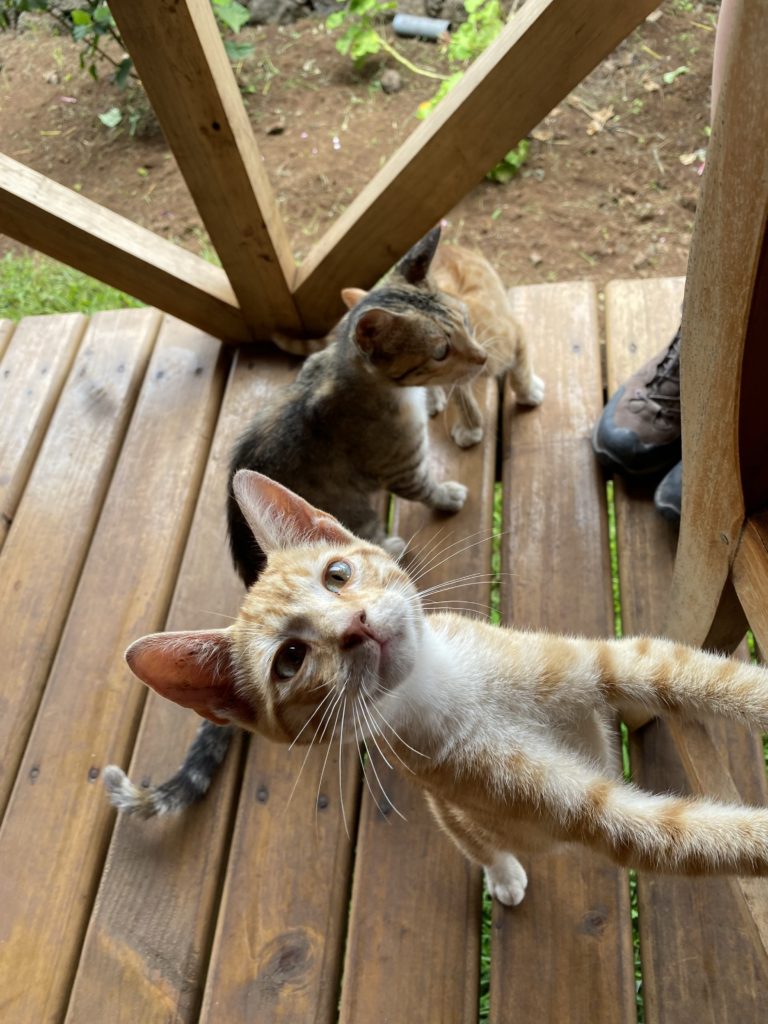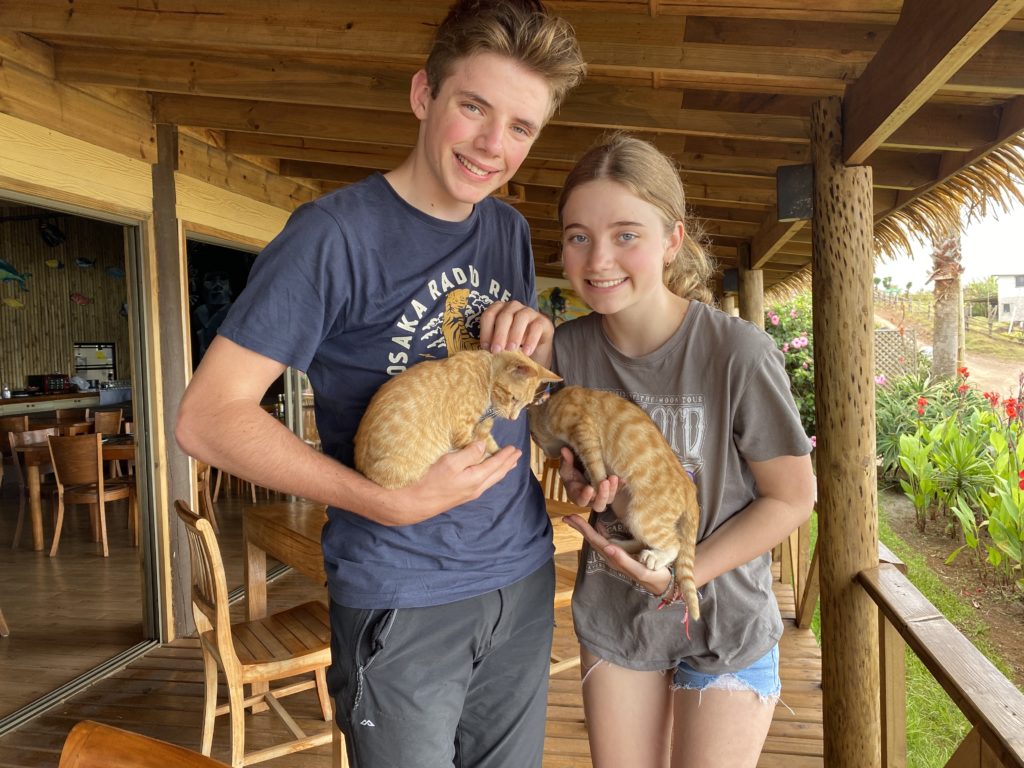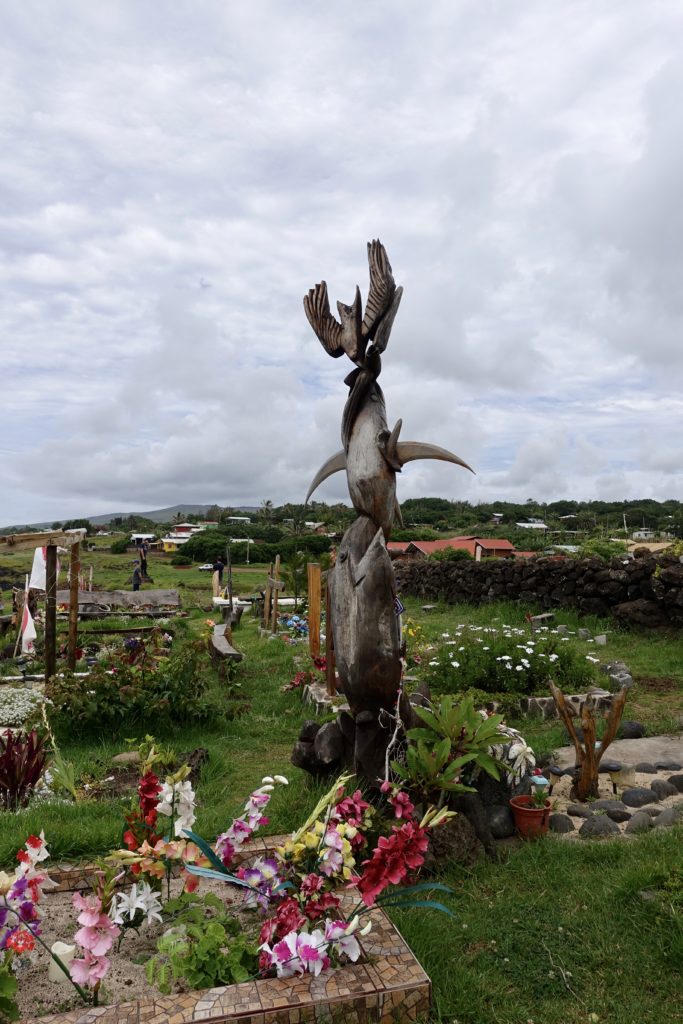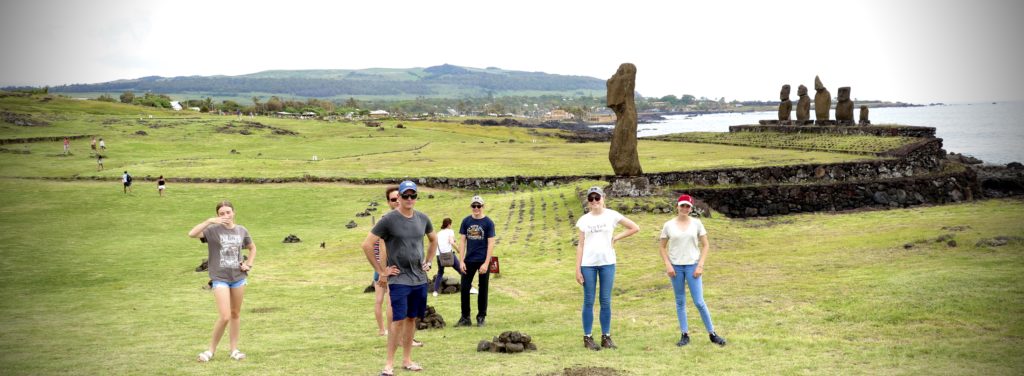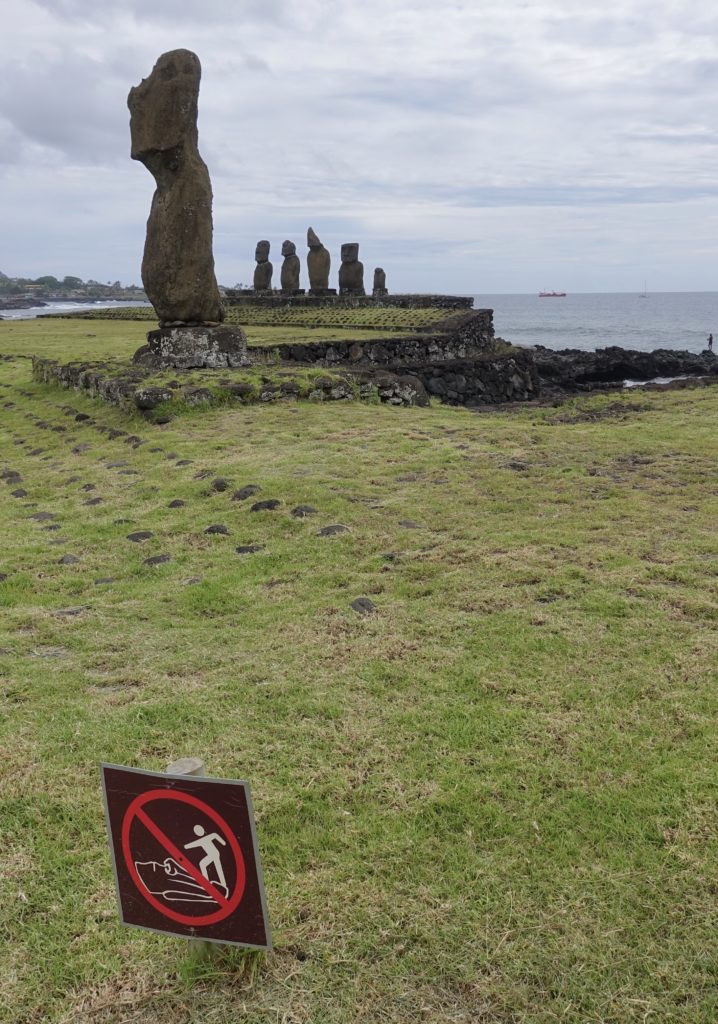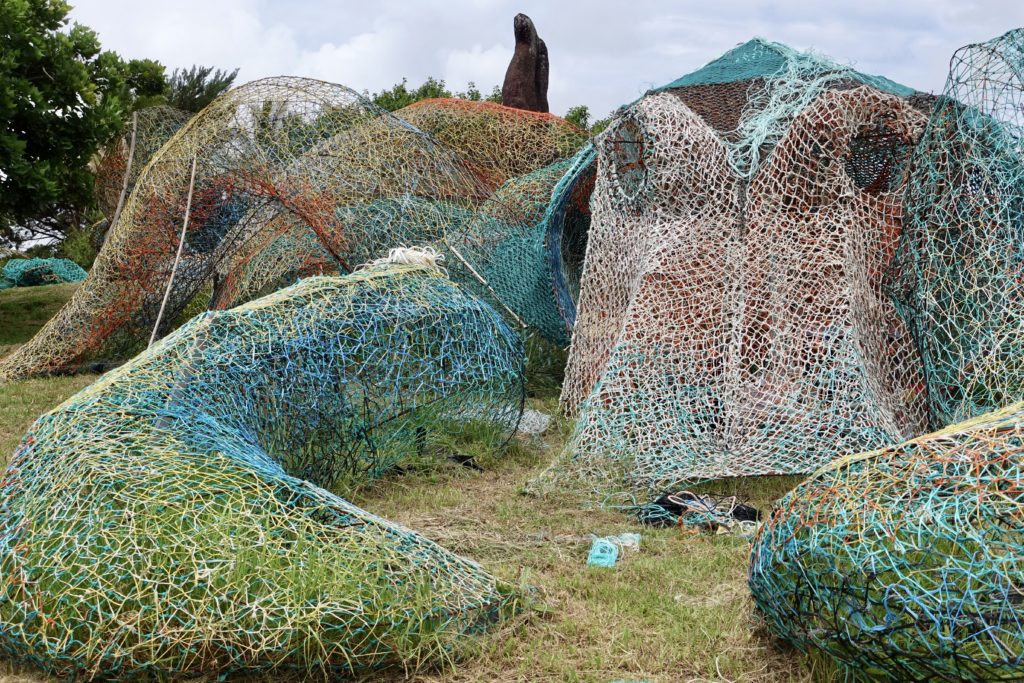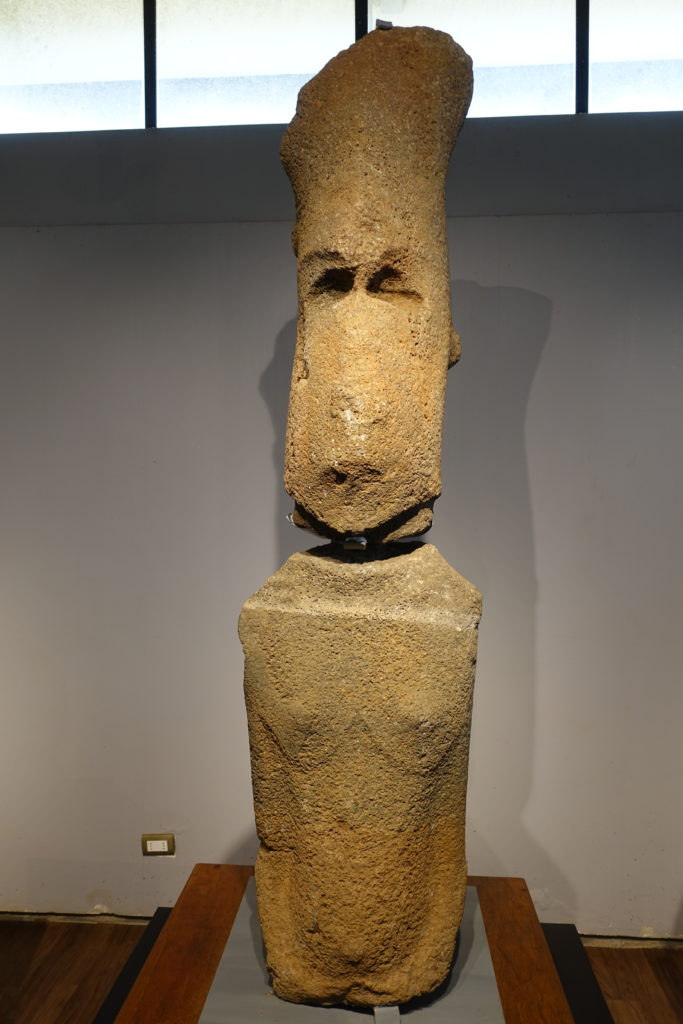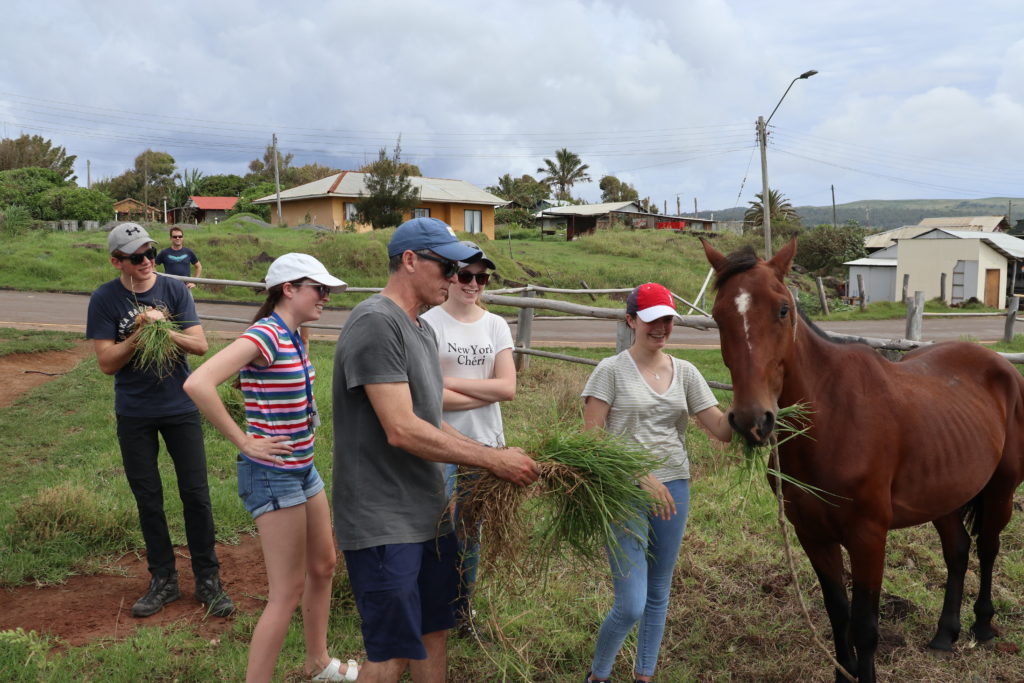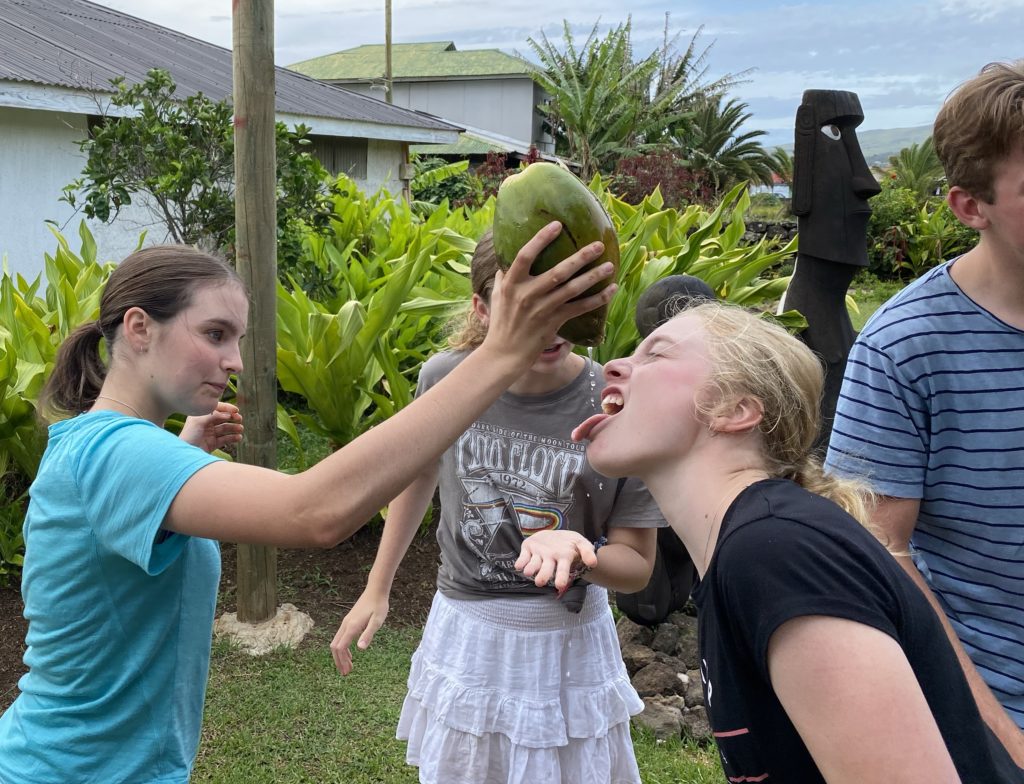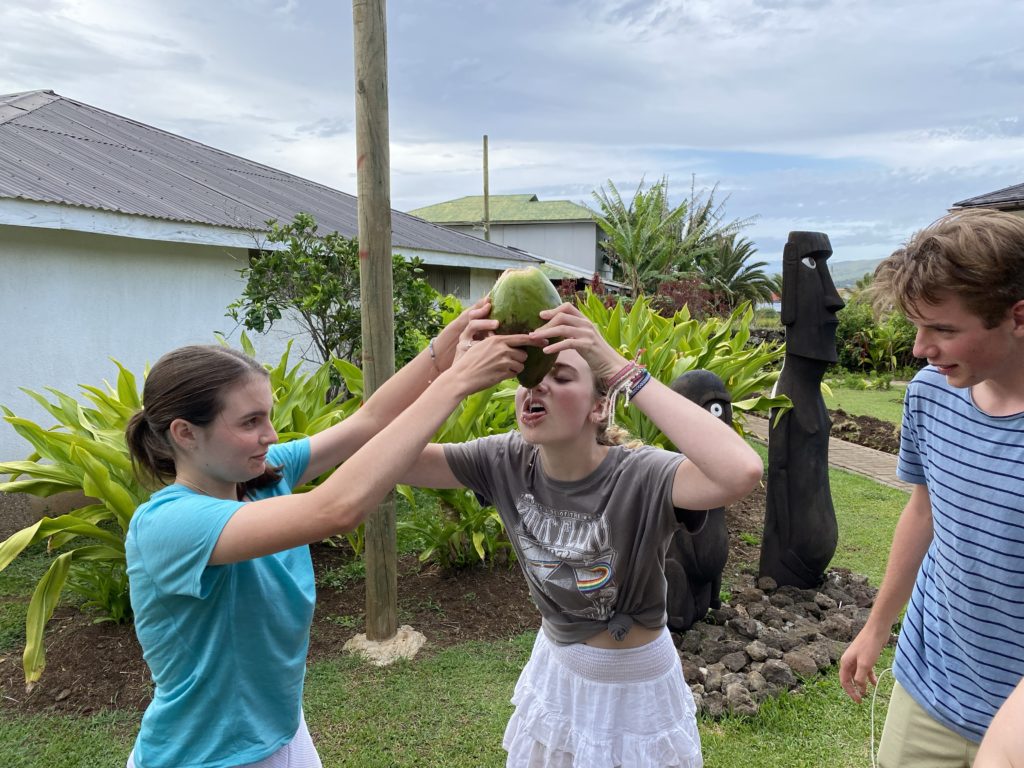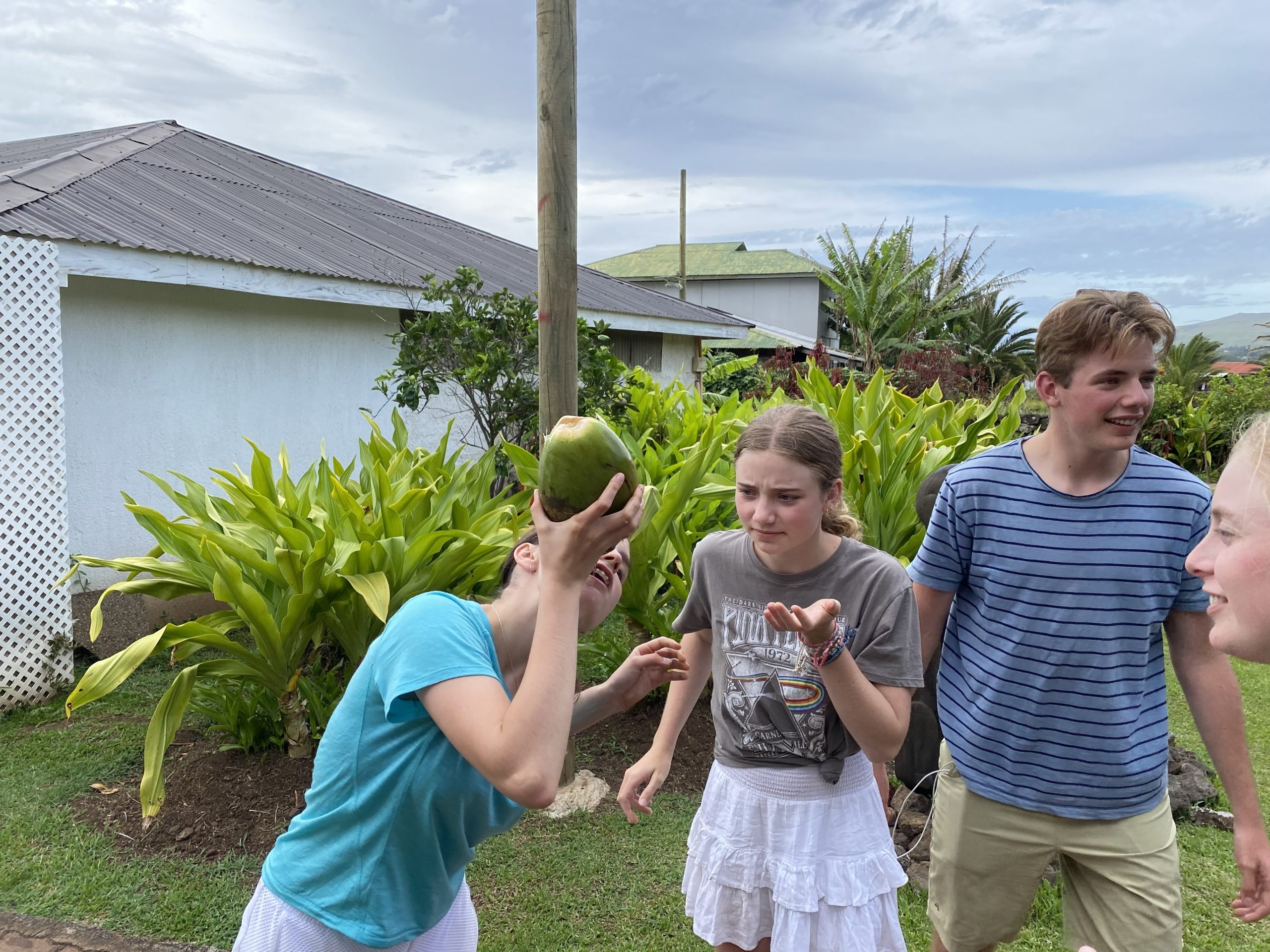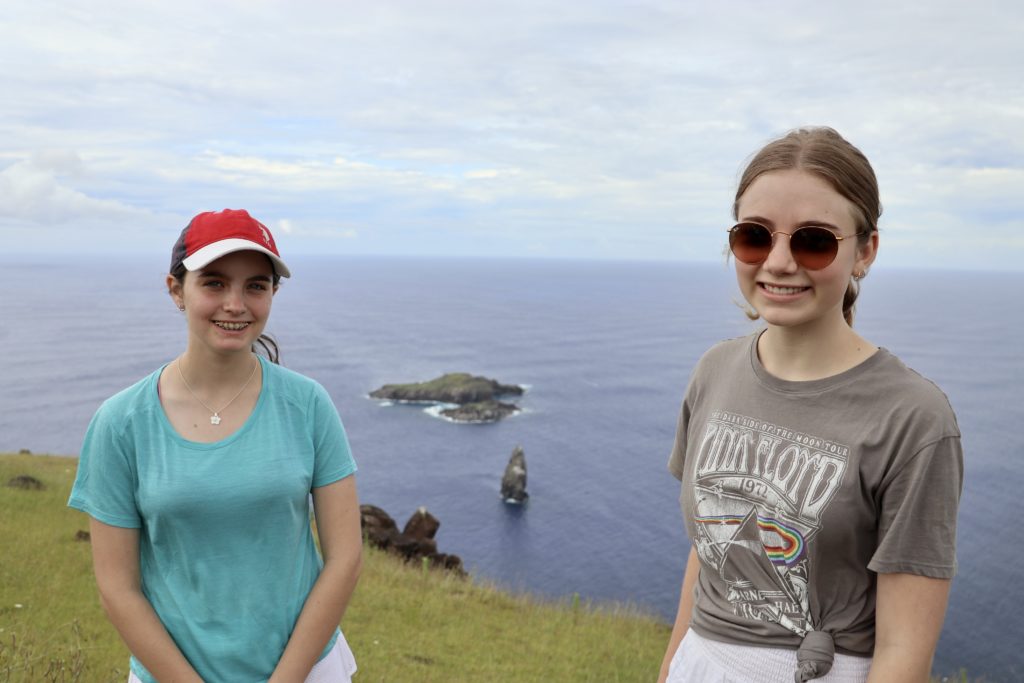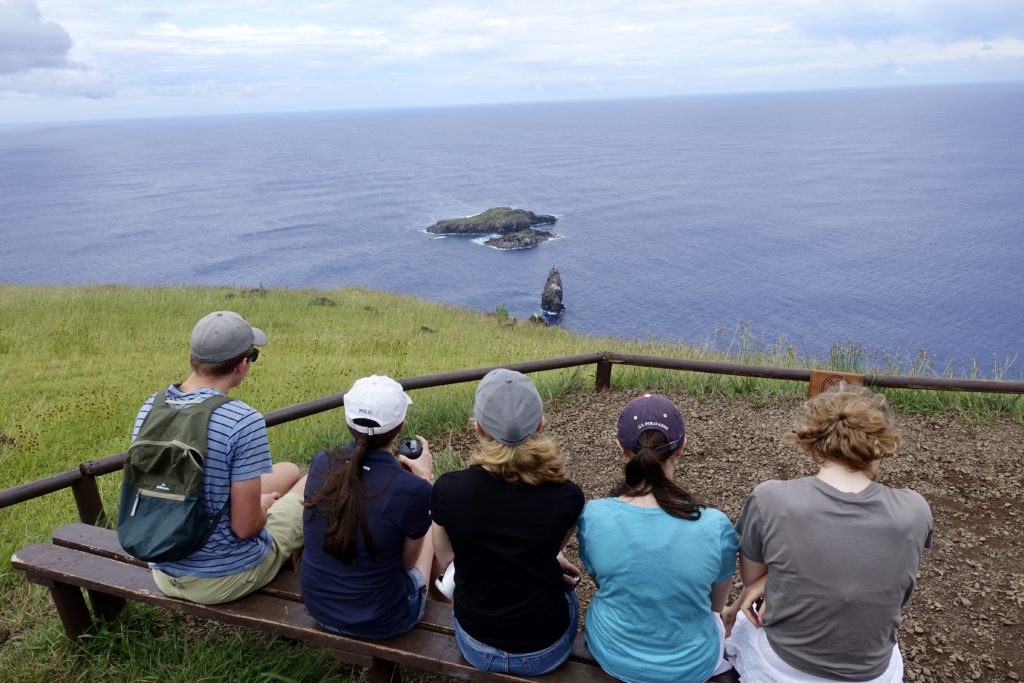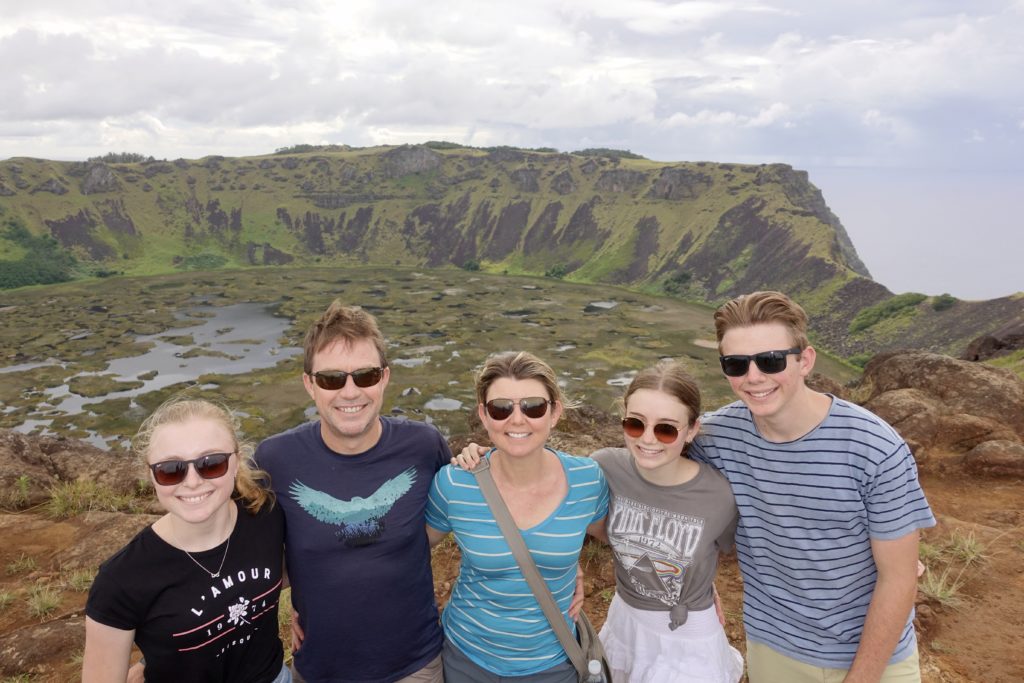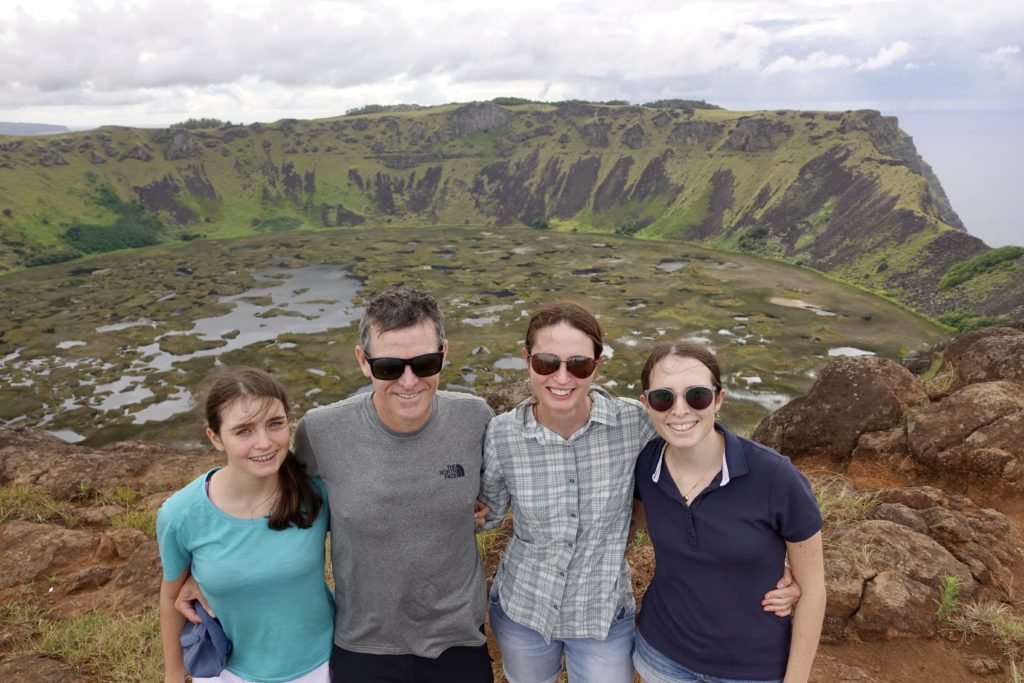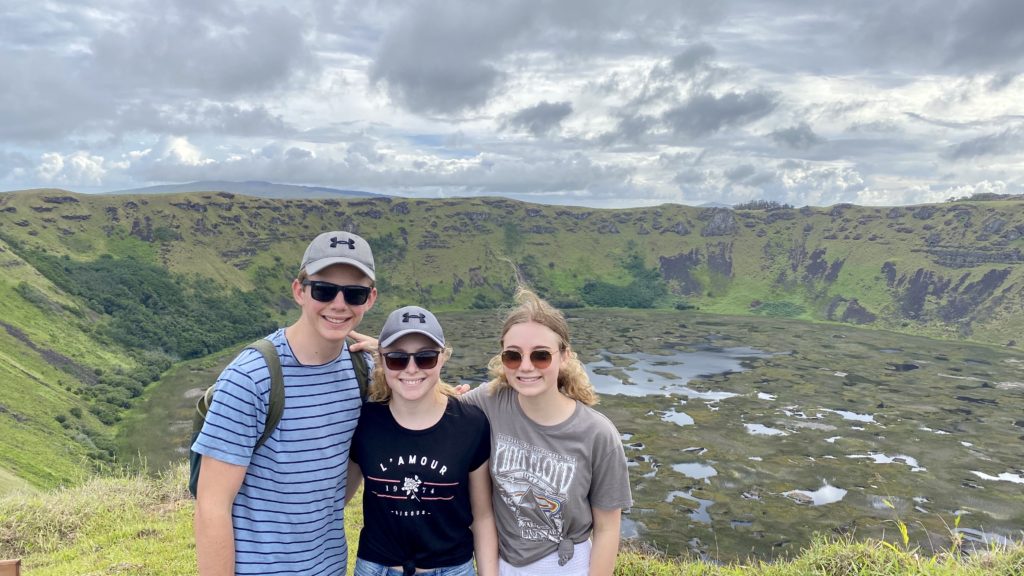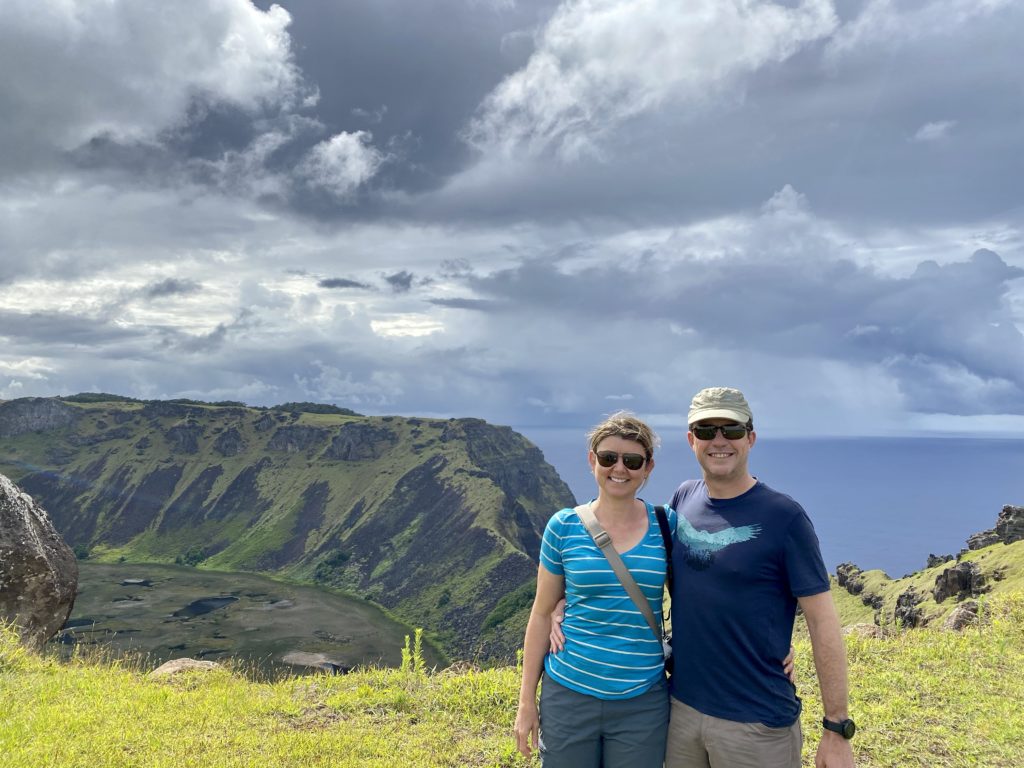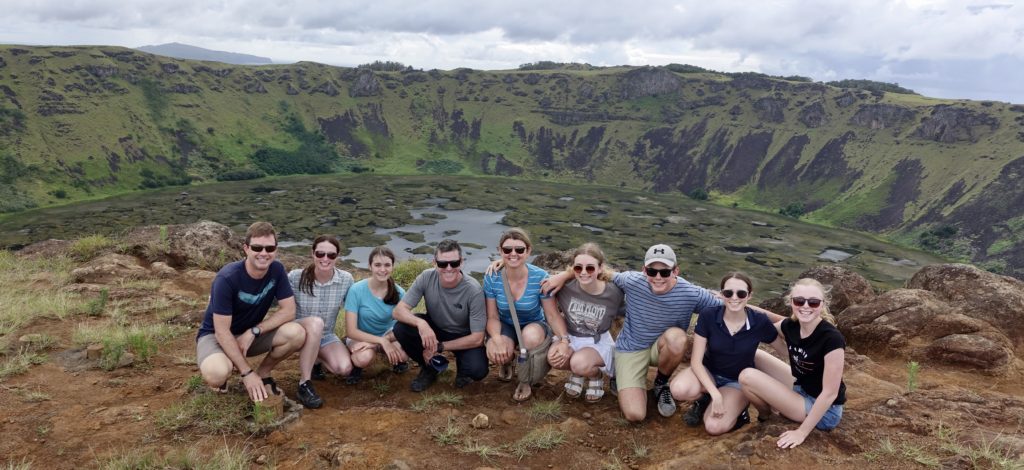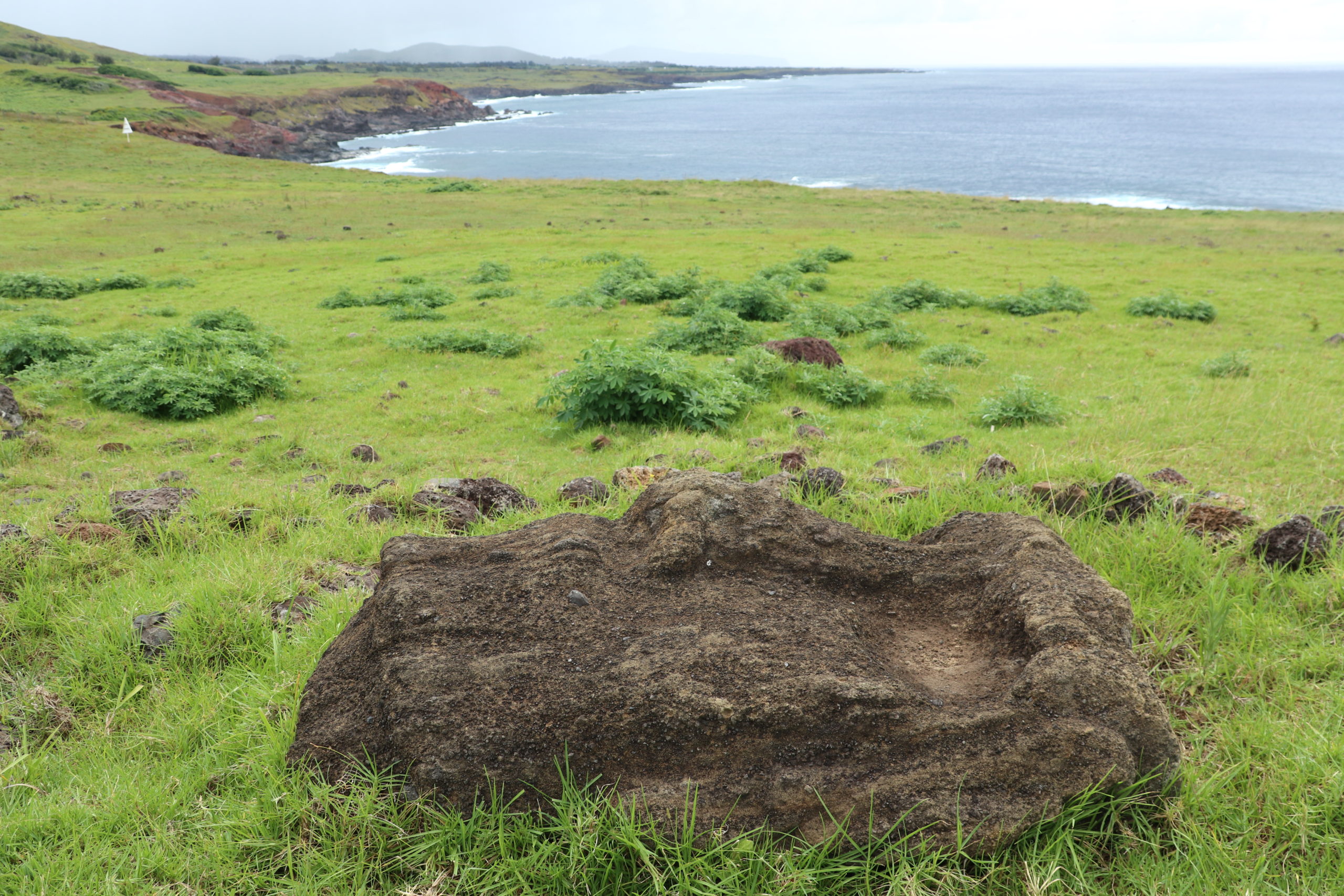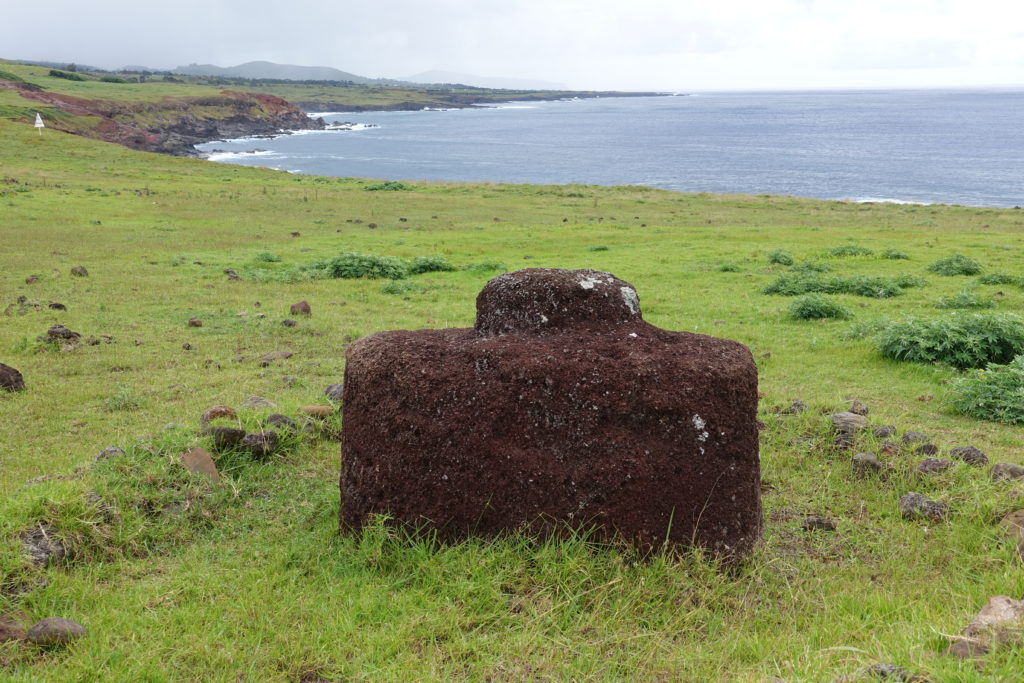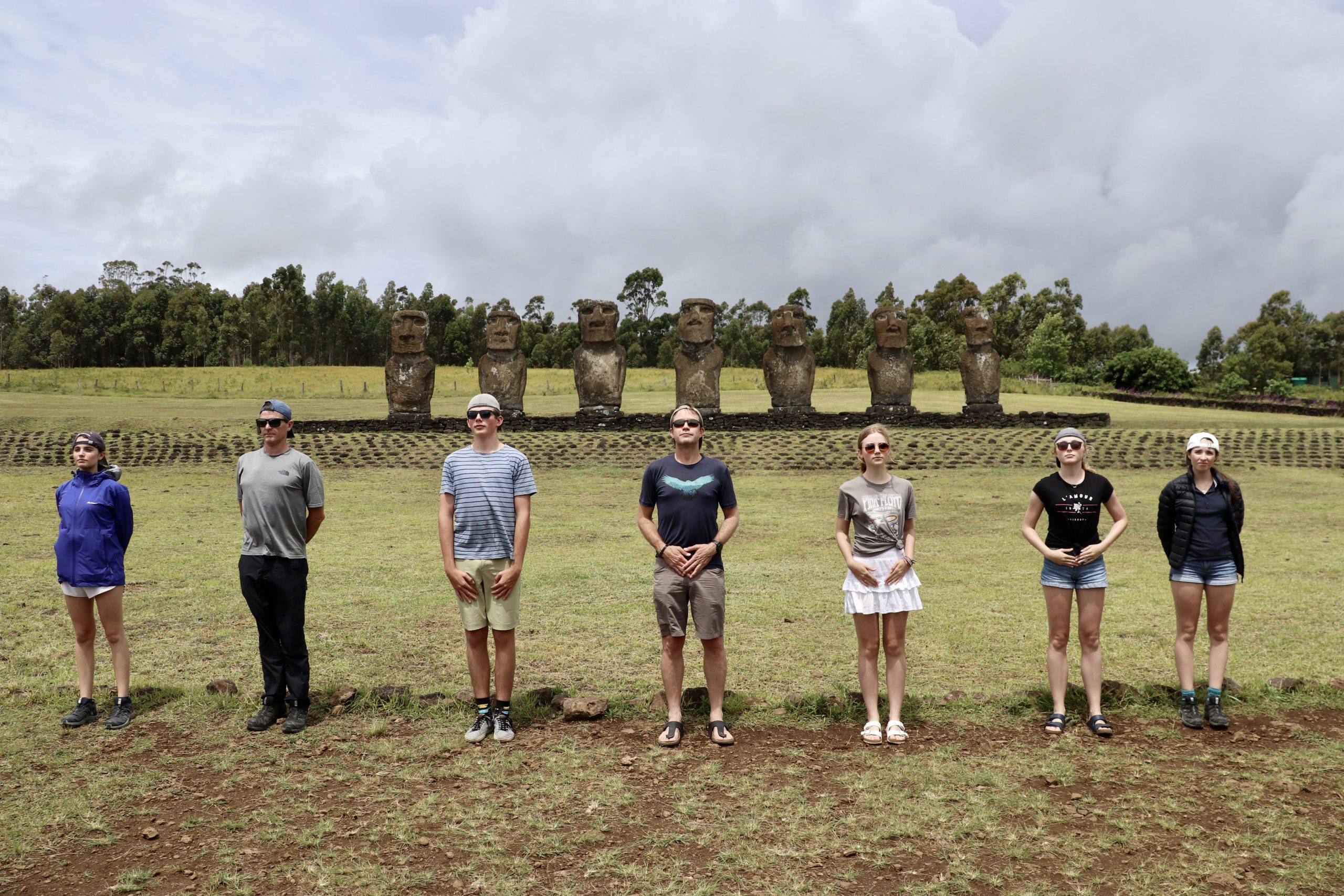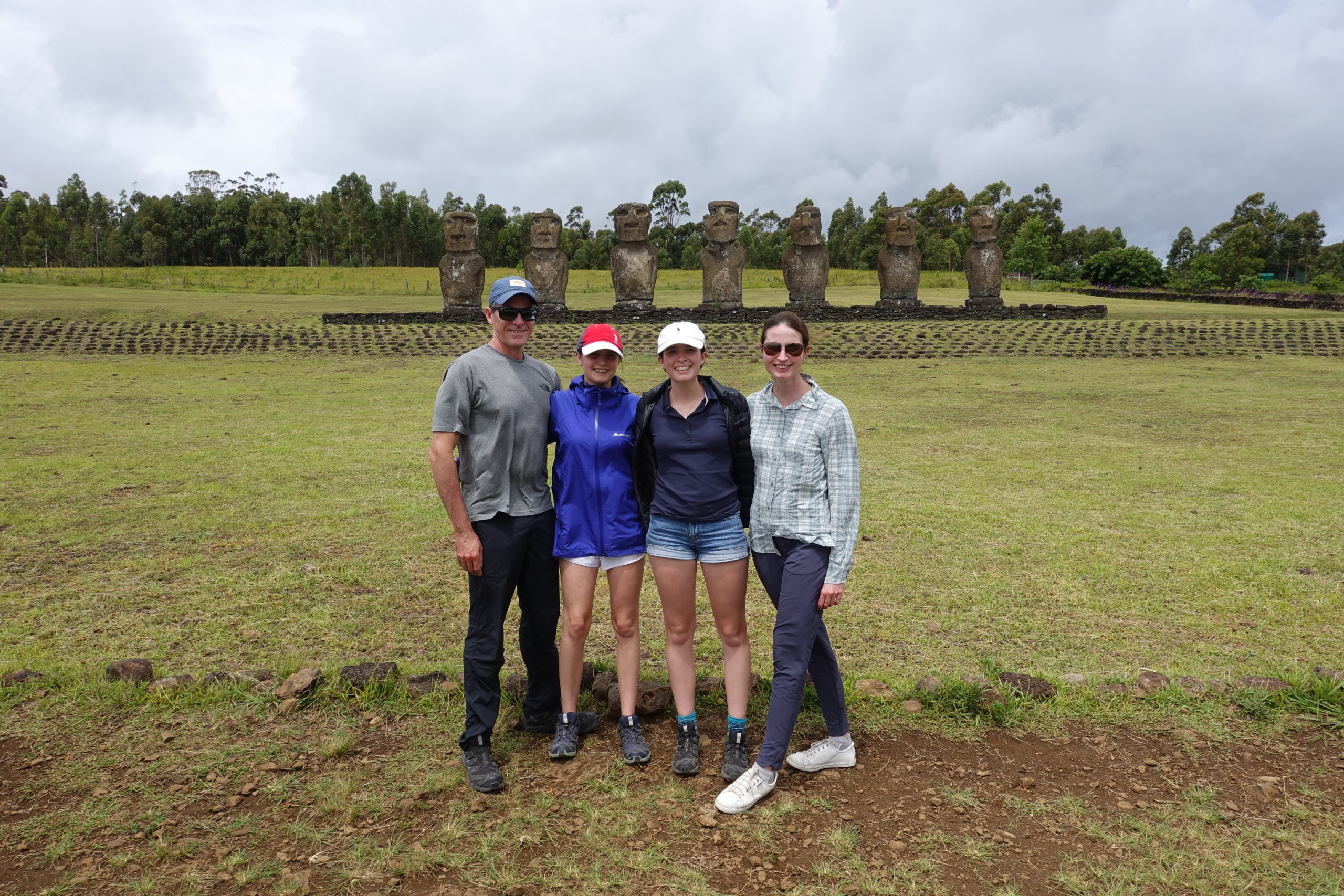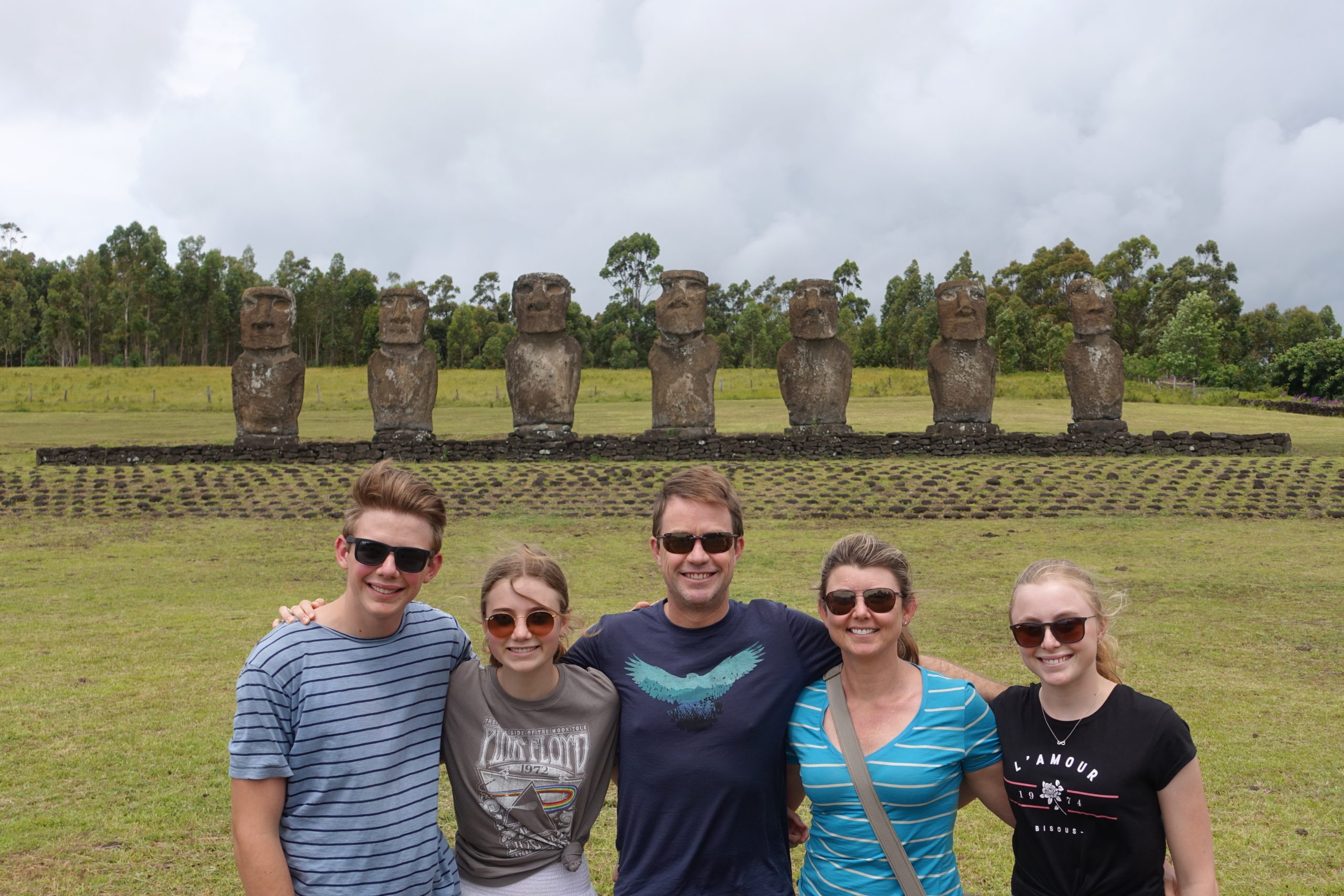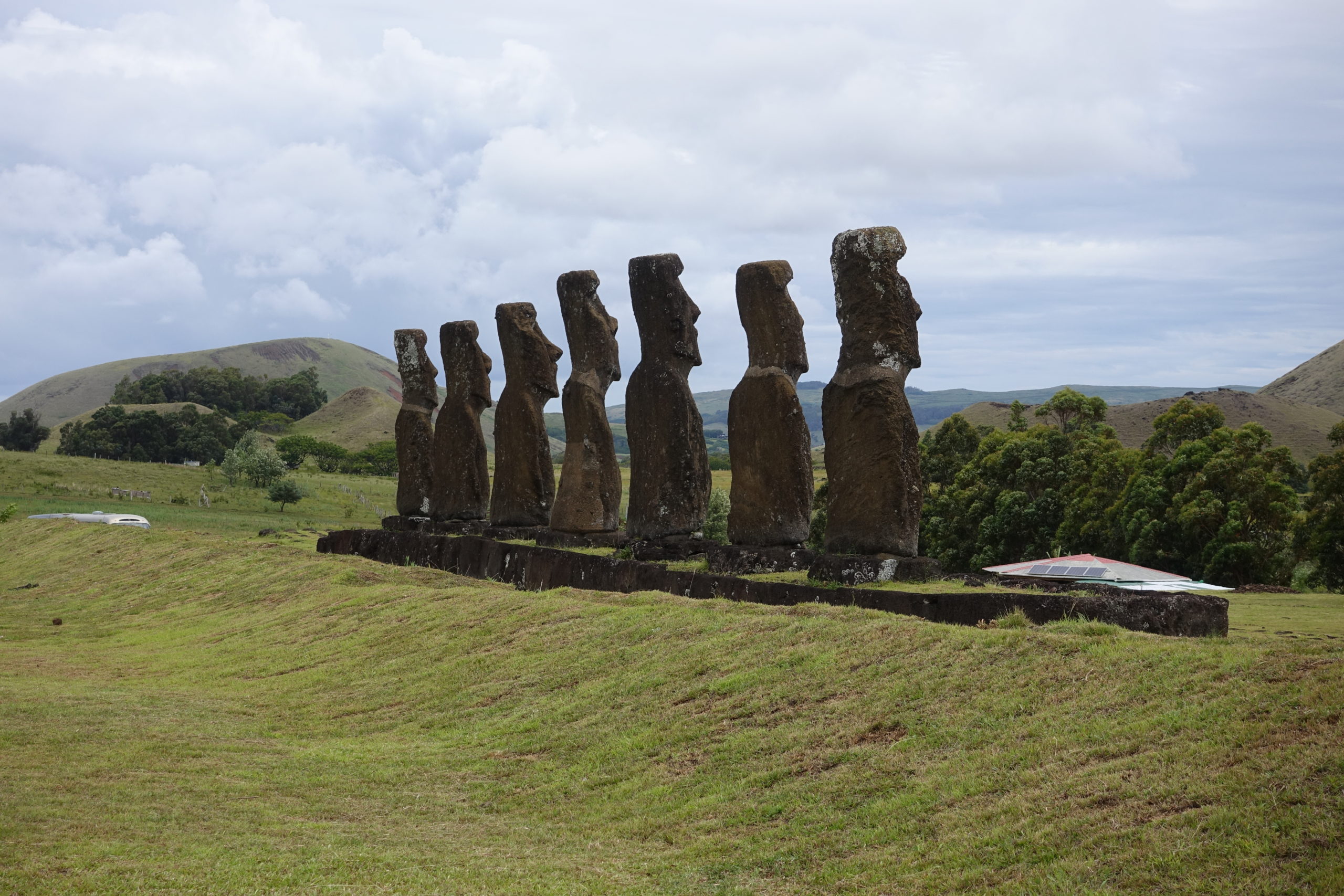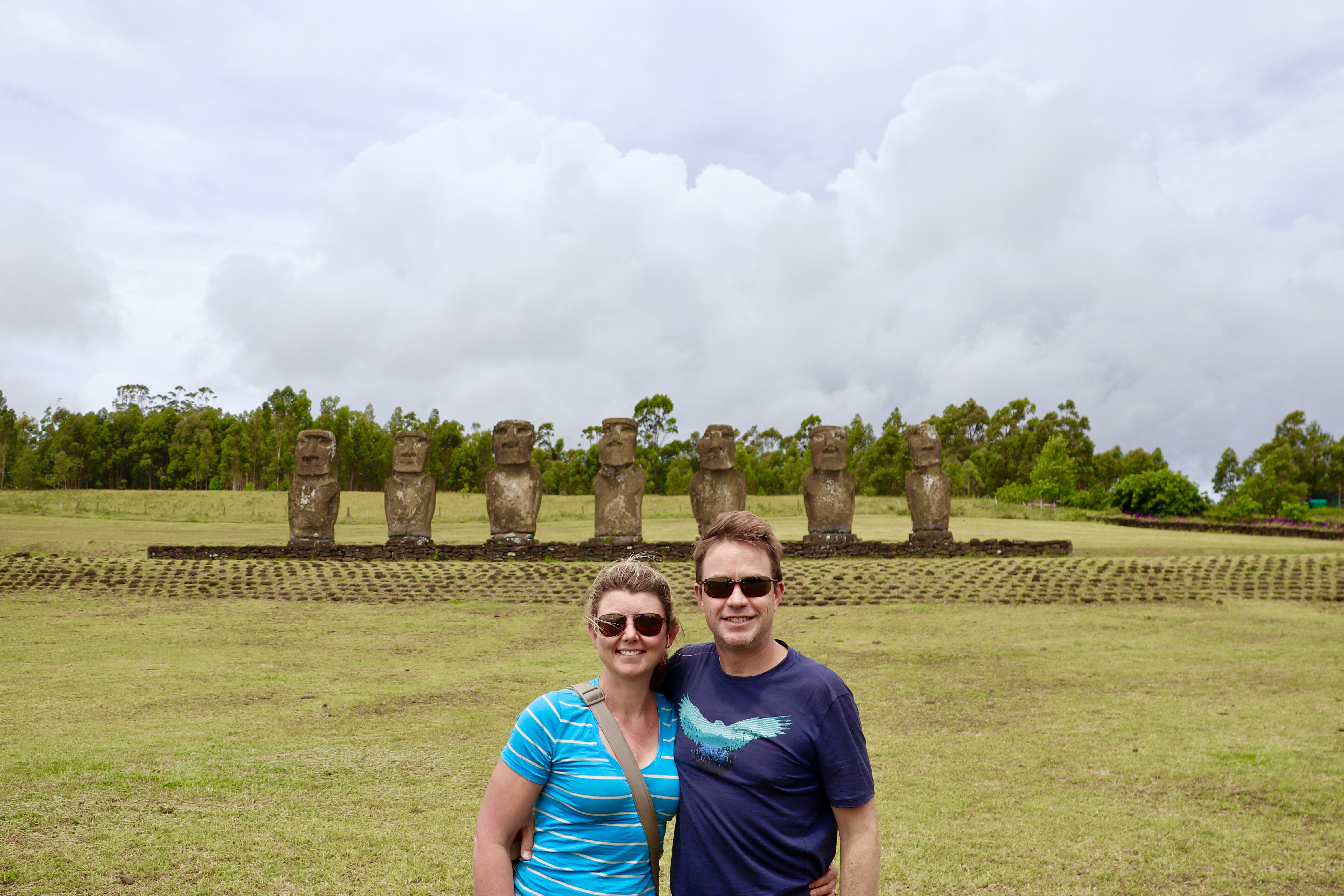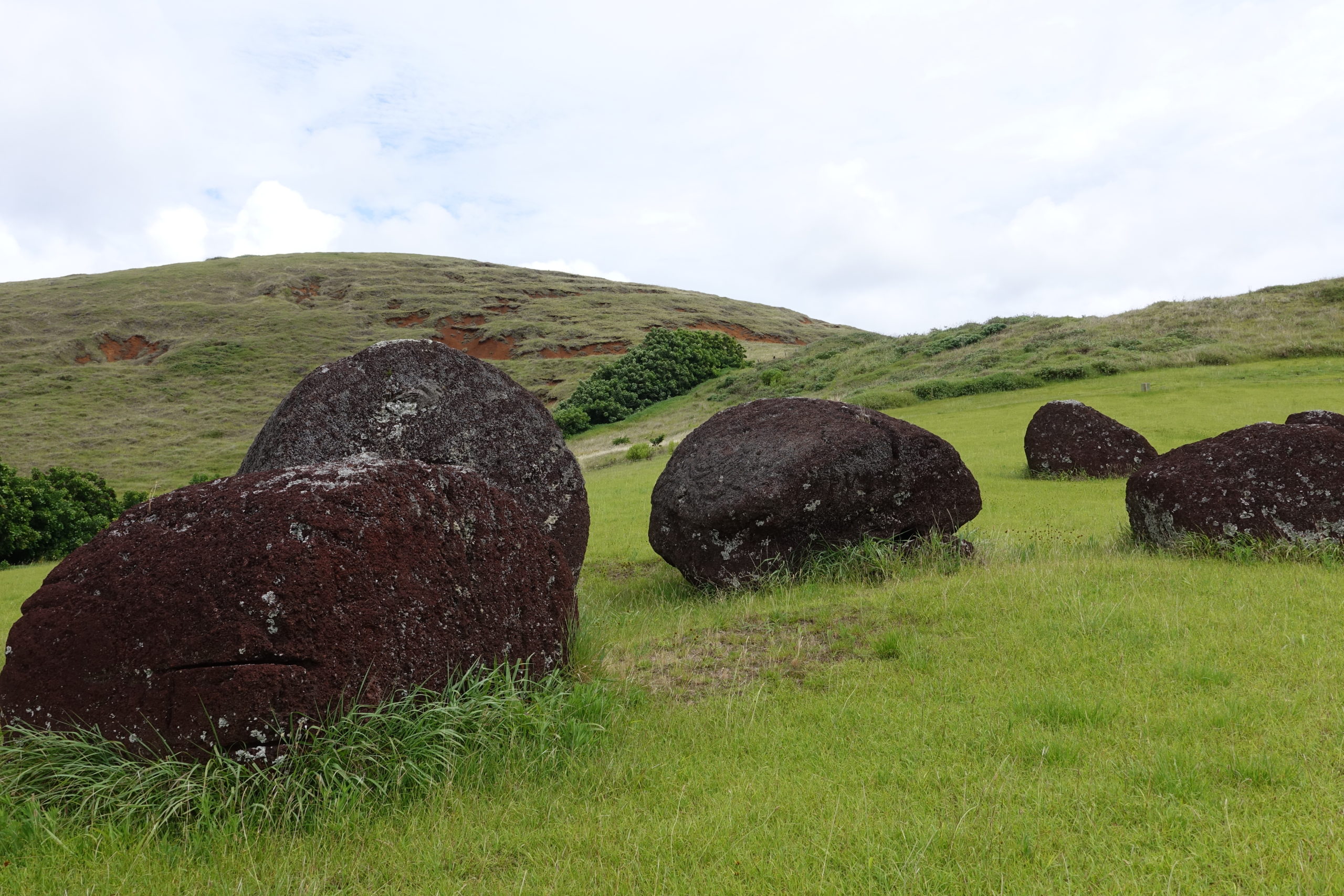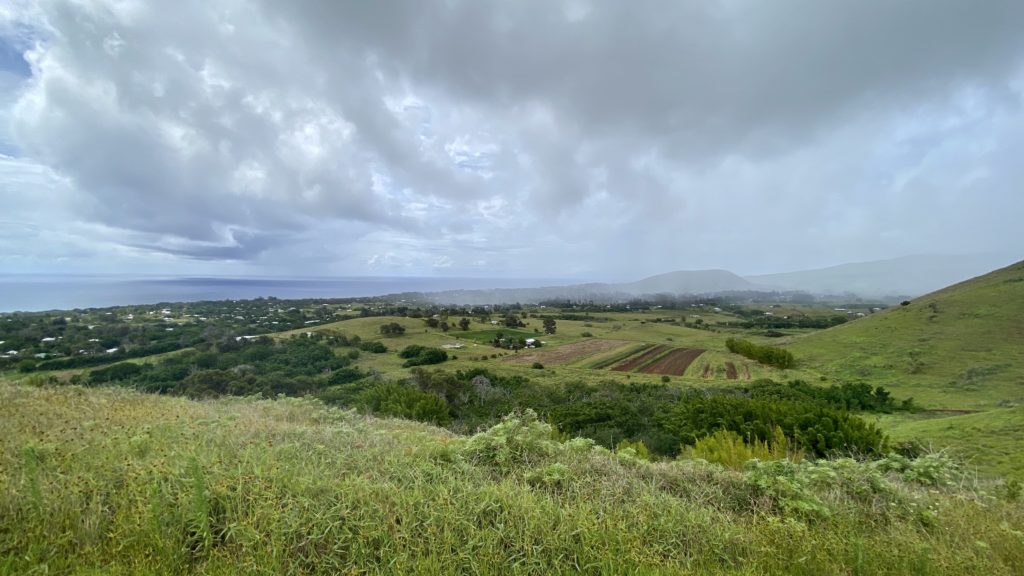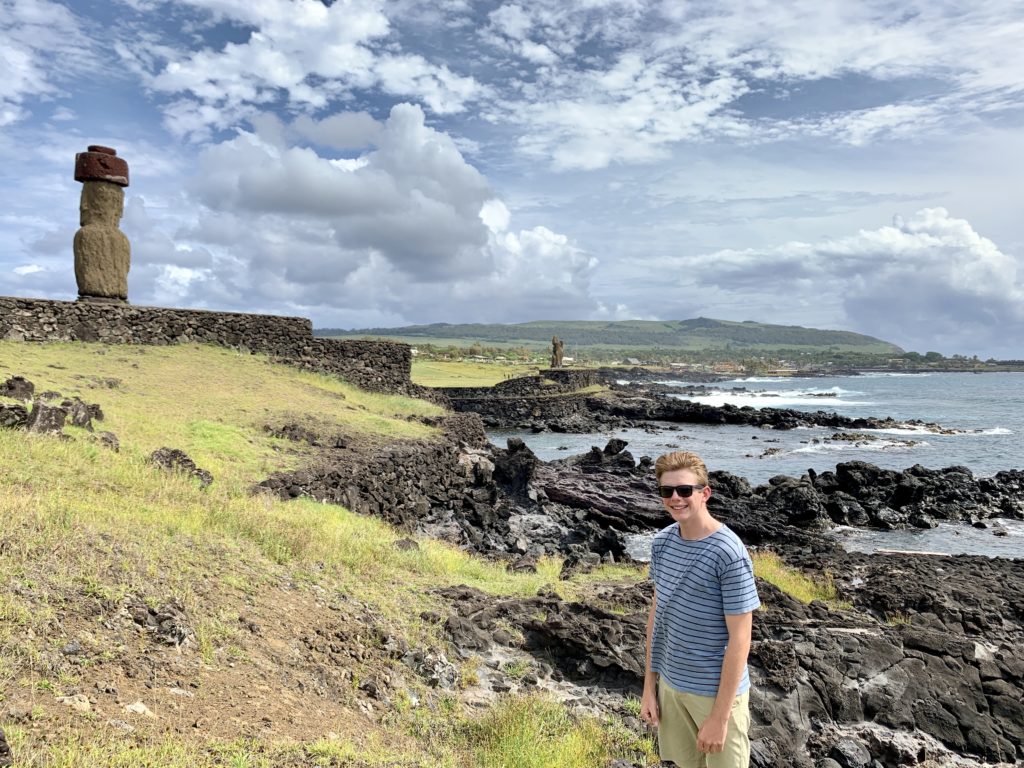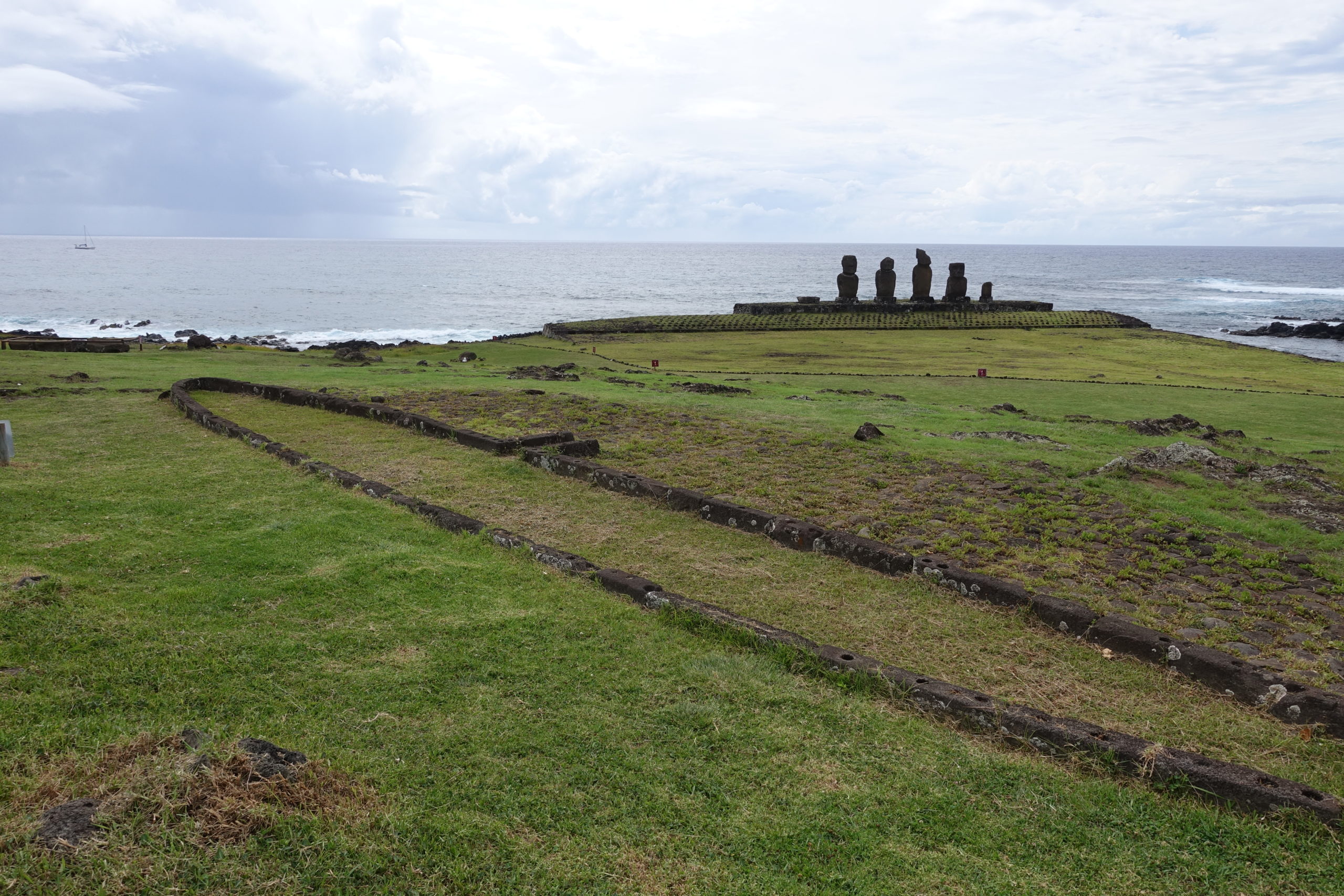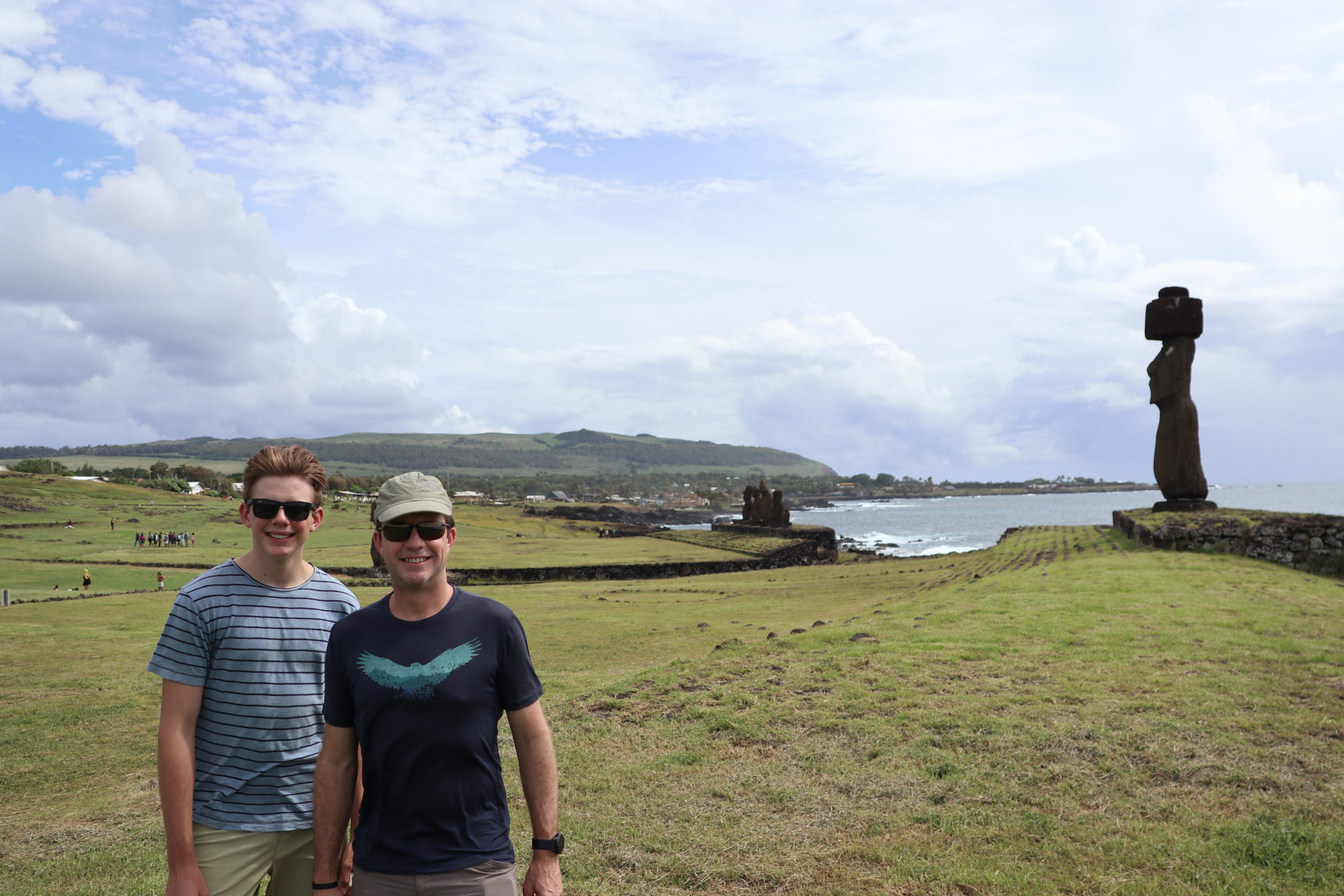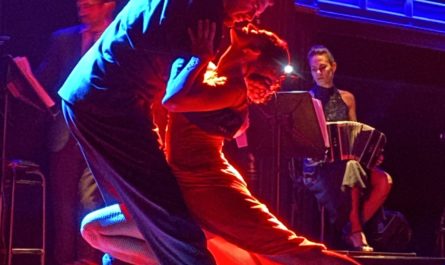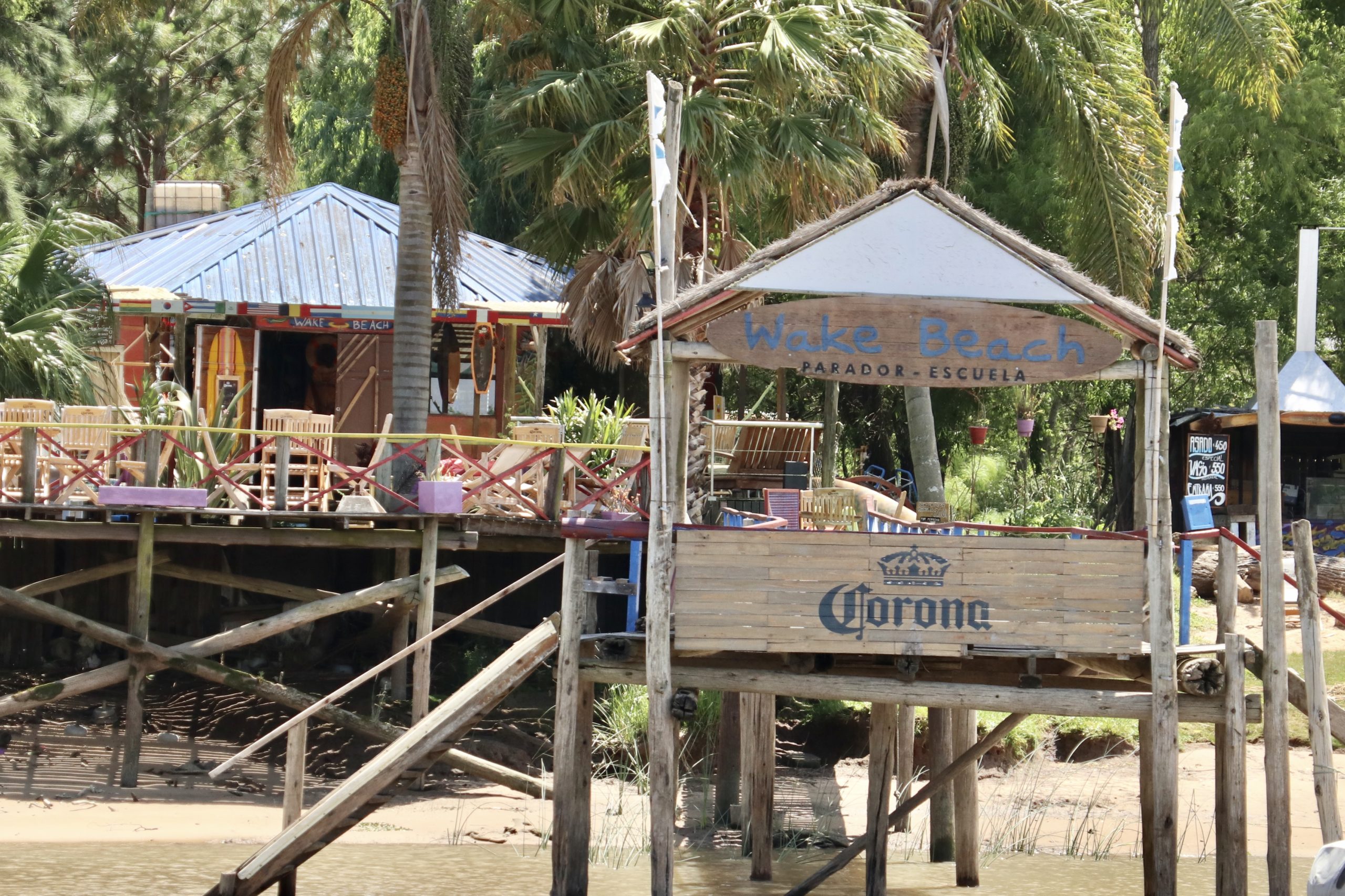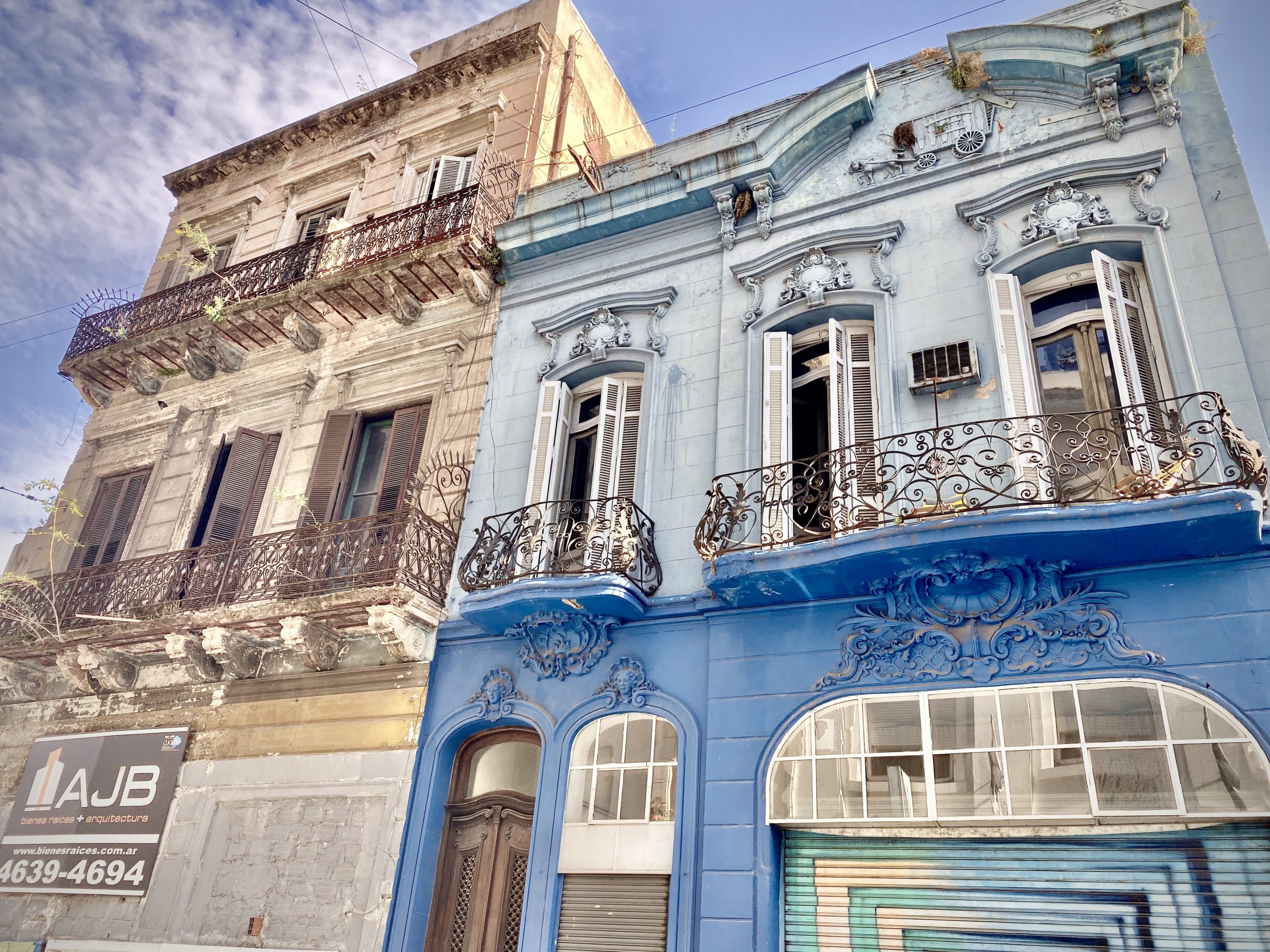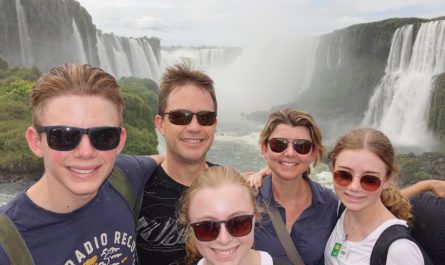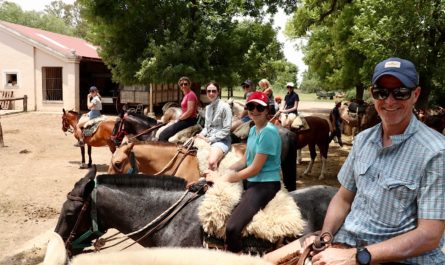It was smooth sailing as we dropped off the cars and boarded our 4hr 45min flight to Rapa Nui / Isla de Pascua / Easter Island.
The 1.5km trip from the airport to our hotel gave a little tour of the main town Hanga Roa and we realised this was very different to what some of us were expecting.
The teenagers thought it was a palm fringed tropical island with shite sandy beaches with luxury resorts.
The roads are in disrepair, the coastline was jagged volcanic rock and there was a plethora of stray dogs, cats, chickens and horses. The houses were small and simple with banana trees and hibiscus lining the streets. Modes of transport ranged from push bikes, scooters, quad bikes, cars without doors, to utes with the tray full of people. It had a very relaxed feel despite some anti Chilean sentiment from the indigenous people.
Our hotel was in a great position on the water where we could sit and look at the view while enjoying our welcome pisco sour with the resident cat family begging for food.
Later in the afternoon we wandered along the ocean front past the harbour to see our first Moai and visit the Museum.
We sampled our first island tuna ceviche for dinner.
Rapa Nui is the most isolated inhabited place in the world. It is thought that it was first settled around 900AD by Polynesians sailing from the west. When they arrived it would have been forested with many species of trees and nesting seabirds. Over the next maybe 800 years these people grew to a population of up to 15,000 as they extensively farmed the island and ate the birds and sea life. It was during this time that the Moai were carved from volcanic rock and moved up to 17km to rest on Ahu (platforms) mainly on the ocean front facing inland to look over their village. How and why they did this when the heaviest was 86 tonnes is still a matter of some conjecture by archeologists and the local Rapa Nui people. The demise of the Rapa Nui people came as a consequence of reduced resources (the entire island became deforested) and contact with Europeans who brought small pox and removed people for slavery. When the first missionary settled there in 1864 there were only 111 inhabitants.
Our tour guide Xavier was a proud Rapa Nui man who claimed to be able to trace his heritage back 33 generations to the original King Hotu Matua. He shared the oral traditions of his people which at times varied from accepted knowledge and science
First stop on our tour was the Ceremonial Village of Orongo. It was located on the highest point of the island on the rim of the Rano Kao volcano. The only basalt Moai was found in one of these houses and now stands in the British museum. The Rapa Nui people have asked for it back -no answer yet. Following the demise of the Moai “religion” where regions were controlled by familial clans there followed the Birdman cult where leaders were appointed based on a clan representative winning the title of “Birdman”.
Every contestant had to swim 1.4km to Motu Nui island where the sooty tern (Manaturi) bird nested. The first one to find and egg and bring it back to Rapa Nui intact was the winner and his clan then rules the island for the next year.
Rano Kau crater 1.6 km across, 200m to the water level inside with the water in the crater being 12m deep. The reeds in the water stand 2m high and were used to make floatation devices for the contestants to use in their swim.
Our next stop was Vinapu where one of only 5 female Moai stands and the architecture of the Ahu is similar to that used in Machu Picchu.
That afternoon we headed to Aku Akivi which has 7 Moai, the only ones that faced the sea. They are said to represent the first 7 original travellers to the island, each with special knowledge.
Puna Pau was next. This “hat factory” is where the red scoria stone was used to carve the hats that were a later addition to the Moai. We watched a rain shower come across the island and all raced to the bus except for Kate, the only one who thought to wear her rain jacket.
Our final stop was to Tahai, where we had visited yesterday. These Moai and Ahu had been restored along with the canoe boat ramp.
On our way to dinner we stopped off for a while to watch some island dancing at a locals music festival.
